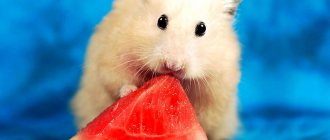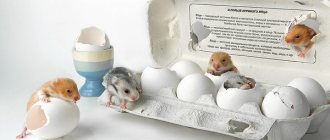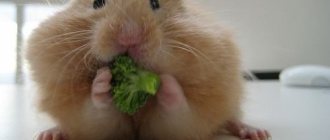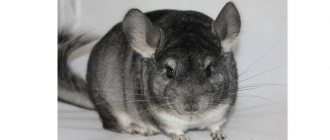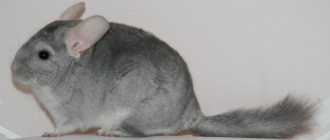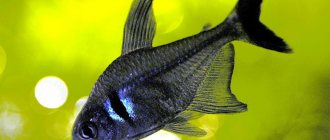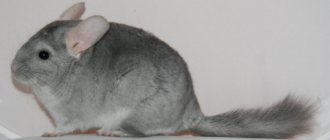The Syrian hamster (Cricetus Auratus) is a subspecies of domestic rodent. This species began to be bred in the thirties of the twentieth century. The species was first discovered in Syria, from where it was transported to Europe. The name of the breed comes from the place where it was found. The breed was distinguished by increased fertility, and the breeders quickly managed to domesticate the animal. Over time, pets were divided into several species, each with its own distinct unique features (color, coat length). It is these qualities that we have come to mean by the phrase “colors of Syrian hamsters.”
Later, 2 English clubs, BHA and NHC, developed a classification of hamsters based on genes, and not just appearance. Rodents were gaining more and more popularity in different parts of the world, and countries began to give new names to flowers. They appeared in the CIS countries relatively recently. Since we did not have enough correct information on caring for these animals, the conditions for keeping the babies were often terrible. Naturally, there could be no talk of any accepted classification of colors. Everyone called them whatever he liked, based on his own preferences and associations.
However, this knowledge should not be neglected. To avoid confusion, it is better to study the table of species and clearly determine which of them your Syrian hamster belongs to. It is important to correctly fill out the breed and color column in the veterinary passport, especially if you plan to cross the border with the rodent.
Origin of the species and description
Photo: Syrian hamster
The Syrian hamster is a chordate animal. They are classified into the class of mammals, the order Rodents, the family Hamsters, the genus Medium hamsters, and the species Syrian hamsters. Initially, the name golden hamster was assigned to them thanks to zoologist Georg Robert Waterhouse. On the recommendation of Charles Darwin, he compiled a list of animals that arrived from the expedition on the Beagle. Among the diversity of representatives of the animal world, there was the only representative of this breed.
Video: Syrian hamster
This species of animal was first described by the English scientist, zoologist and researcher George Robert Waterhouse in 1839. The scientist mistakenly considered it an extinct species. This assumption was refuted in 1930, when another scientist Israel Aharoni, during his expedition, discovered a Syrian hamster - it was a pregnant female. The scientist transported this hamster to the University of Judea, where the female safely gave birth to 11 small hamsters. Subsequently, of the entire brood, only three males and the female who gave birth to them remained alive.
Scientists tried in vain to find other individuals of this species in natural conditions. However, they never managed to do this. Then Akhoroni came up with the idea of crossing a female Syrian hamster with a male of a related species. This couple became the progenitors of a new species. Around 1939-40, the resulting offspring were transported to the United States of America. After another 1.5-2 years, scientists finally came to the conclusion that the Central Asian hamsters had become extinct, and there were no more representatives of this species in natural conditions.
In the process of studying Syrian hamsters, it was found that they have a dental structure similar to that of humans, and therefore they were used in laboratory conditions to study dental diseases. To date, scientists have not been able to answer the question of what caused the extermination of this species of animals.
Feeding
To ensure that your Syrian pet hamster does not get sick throughout its life, you need to carefully consider its diet. In addition to microelements, the pet should receive vitamins.
Diet
The basis of the diet is a grain mixture. You can make this mixture at home, but it is better to give preference to ready-made food, which is available in all pet stores. The Syrian hamster can hardly be called a voracious animal, and preparing food at home in small portions is inconvenient. In addition, the components for preparing the grain mixture need to be stored somewhere. Considering that various bugs are happy to infest them, they should be stored under certain conditions.
Feeding the hamster
Be sure to include vitamin feed in the diet. Since hamsters are omnivores, you can give them all fruits and vegetables. It is recommended to give rodents apples, pears, persimmons, zucchini, radishes, greens and pumpkin. Occasionally you can give your pet bananas and grapes. In general, you should include fruits and vegetables that grow in Russia in your diet.
What not to give to Syrians
You should not spoil your pets with citrus fruits. Experts also recommend excluding cabbage and watermelon. The latter is harmful due to the use of pesticides in its cultivation. If we are talking about a fruit grown in your own garden, you can occasionally pamper a rodent by treating it to a small piece of this delicacy. You still can’t pamper your rodent with fermented milk products and sunflower seeds.
Catering
It is important to organize your meals properly. Since Syrians rest during the day, it is enough to feed them 2 times a day (morning and evening)
Rodents eat in moderation, so you should not pour a large amount of grain mixture. As for fruits and vegetables, they should be given exactly as much as the pet eats. When consuming soured or spoiled foods, Syrians get sick and have problems with the gastrointestinal tract.
Appearance and features
Photo: Syrian hamster boy
Syrian or golden hamsters were bred in laboratory conditions from wild hamsters brought from Syria by zoologists in the last century. The body length of an adult is approximately 13-15 centimeters. Average body weight is 200-300 grams. This species is characterized by sexual dimorphism. Female individuals have a larger and stockier body. At the same time, the body length of females is slightly less than that of males. Another distinctive feature is the shape of the back. In females it is straight, in males it has a pointed shape. Individuals can also be recognized by the number of nipples. Females have four of them, males have only two.
Animals have a specific structure of their limbs. They have 4 toes on their forelimbs and five on their hind limbs. Most individuals of this species are golden in color, but individuals of other colors may occur.
What colors of Syrian hamsters can be found:
- copper;
- chocolate colors;
- sable;
- beige;
- honey;
- dark chocolate color.
The color may be uniform or have spots of a different color. The body of Central Asian hamsters is covered with thick and soft hair. Golden hamsters come in long-haired and short-haired varieties. The hamster's muzzle has a round, slightly elongated shape. There are small, rounded ears on the side of the head. The hamster's eyes are large, round, black, shiny. The nasal part of the animals is framed by whiskers. Hamsters have a small, short tail that is almost invisible in their thick fur.
Additional shades
The colors of Syrian hamsters are not limited to those listed above. Let's look at less common, but no less popular colors.
Beige
The color of the beige rodent was obtained by crossing gray and red animals. The wool may contain light orange notes. The abdomen is ivory-colored and the base of the pile is grayish. Distinguished by dark ears, a brown spot on the chest and stripes on the cheeks. The fur shimmers in the sun with warm shades: pink, orange, peach.
Cinnamon
The red-haired pet has a bright copper-orange coat. Sometimes the pile is brick-colored. The animal is distinguished by a white or cream crescent on its chest, as well as bluish stripes on its cheeks.
Brown
The animal is light red or sandy in color. Sometimes golden and brick shades appear on the fur. The tummy is milky, less often sugar. There are brown stripes on the cheeks.
Copper
The Syrian hamster is copper-colored with grayish ears. Sometimes there are representatives with white paws and a light chin.
Cream
The Syrian golden hamster is similar to its cream-colored counterpart. This variety is also popular. The coat is uniformly colored creamy. The belly can be of other colors: pink and orange. Thanks to the mixture of pink and orange, the animal resembles a ripe fruit. That's why peach Syrian is so popular.
Chocolate
Chocolate hamsters have a deep brown coat. The roots of the lint are similar to milk or white chocolate. The ears are black, the chin and paws may be white. The color of a hamster can change over time - lighten or darken.
Yellow
Fluffy rodent with bright yellow fur. The base of the hair is white or light beige. The ears are contrasting - brown or black. There is a caramel or lemon spot on the chest. The yellow tint is persistent when crossed. Therefore, the offspring of a yellow animal and an individual with a different color will most likely turn out to be yellow. Perhaps the fur coat will become less bright.
Honey
The color of the animal resembles honey. There is a dark spot on the stomach. Sometimes the coat has a cream or caramel tint. Hamsters get honey coloring from their mother (females can get it from their father).
Smoky pearl
This variety of Siberian rodents is ashy-colored with creamy inclusions. The breast is lighter or darker than the main coat. In the sun, the fur shimmers like a pearl.
Chocolate sable
The animal has a coat that resembles milk chocolate. Hair roots look like white chocolate. The animal becomes lighter with age. The ears are dark and there are light brown circles around the eyes. Sometimes there is a white chin or “bracelets” on the paws.
Blue mink
Pets have a gray coat with a blue tint and a slight brown tint. The roots of the pile are milky. Bracelets and a white chin are allowed.
Where does the Syrian hamster live?
Photo: Syrian or golden hamster
Today, Syrian hamsters are not found in natural conditions. They exist exclusively in artificial conditions as pets. The founders of this species are wild hamsters, which were brought by a zoologist from Syria. This type of hamster has been purposefully bred in the United States. At the time of the existence of animals in natural conditions, they preferred to live in desert regions with a dry climate. The natural habitat of small rodents was quite wide.
Geographic regions where hamsters live:
- countries of Asia Minor;
- central regions of Africa;
- Southeast Asia;
- certain regions of the European continent;
- North America;
- South America.
Golden hamsters are considered not at all picky animals. They can adapt to living in almost any conditions: in steppes, forest-steppes, forests, even in mountainous areas. Some individuals lived in the mountains at an altitude of more than 2000 above sea level. Park areas, agricultural fields, orchards, and vegetable gardens were also not an exception. Small rodents choose small but deep burrows as their place of residence. It is worth noting that the hamsters chose those regions as their habitat that had enough food for the normal functioning of the animal.
Diet
Mixtures containing 20% fat, carbohydrates, fiber and protein are used as food for rodents. The daily norm for an adult rodent is 50 g, namely:
- grain mixture – 15 g;
- white bread – 5 g;
- root vegetables, fresh vegetables – 30 gr.
Rodent food must be chosen carefully. Firstly, the mixture must include nutrients, and secondly, vitamins and minerals. Since golden rodents are extremely sensitive to a lack of vitamins, their food consists of: oats, flax, corn, millet. As for fresh vegetables, these are carrots and lettuce.
When giving fresh vegetables to your hamster, you need to ensure they are fresh.
Rotten vegetables cause problems in the digestive system, which is why it is so important to keep the feeder clean. Water should be at room temperature and always clean
Interestingly, golden hamsters prefer milk over water. But this does not mean that there should only be a milk drink in the cage.
What does the Syrian hamster eat?
Photo: Syrian hamsters
Syrian hamsters are considered almost omnivorous animals. The source of nutrition can be either plant food or food of animal origin. As a last resort, rodents eat larvae, ants, small bugs, etc. Hamsters living in natural conditions eat almost anything they can find and eat. These can be seeds, roots of various types of vegetation, berries, juicy fruits, herbs, etc.
Interesting fact: Science knows of cases where golden hamsters living in natural conditions ate their cubs.
If an animal is kept at home, it is important to understand that human food is completely unsuitable for it. A person whose home contains a small fluffy rodent must become familiar with the rules and feeding habits of the animal, as well as avoid overfeeding and ensure a balanced diet. It is strictly forbidden to feed hamsters sweet, salty or fatty foods. Despite the fact that these little animals simply love sweets, their digestive system is not able to digest such foods. This can cause the death of the animal.
The basis of a pet hamster's diet should be dry, balanced food. It is easy to purchase at any zoological supply store. The dry mixture must contain vitamins and minerals, and must also be intended exclusively for hamsters, and not for any other animals or birds. However, you shouldn’t limit yourself to dry food only. In order for the animal to be active and healthy, it will also need wet food.
What can you give hamsters as wet food:
- greenery;
- lettuce leaves;
- fruits;
- vegetables;
- berries;
- carrot;
- zucchini.
In small quantities, you can add dried fruits to your diet and always low-fat cottage cheese without any additives. When keeping at home, care must be taken to ensure that the animal always has clean water available for drinking.
Now you know what you can give Syrian hamsters at home and what not. Let's see how golden hamsters behave in their natural environment.
Special colors
During the process of domestication, some species of hamsters received separate names, indicating their rare, unusual appearance.
For example: Persian, Angora, Himalayan, Royal or other hamsters. There are photos of hamsters of various colors on the Internet. Syrians are not only monochromatic. Uneven color is expressed by various spots and color transitions.
- The Royal Hamster is a rare species of Syrian. Long-haired rodents of light cream color. Sometimes the fur is ivory-colored. The base of the pile is white. The middle may contain red and honey shades. The ears are dark, gray or brown.
- The coat of satin hamsters can be of any length. The fur is smooth with a pearlescent tint.
- Angora hamsters have the longest fur of all Syrian varieties.
- The Persian hamster is a fluffy, light-colored creature. Sometimes the coat has a tangerine, honey or cream tint. It is quite rare.
- Rodents with variegated colors are called butterflies due to the unusual pattern.
- Albinos are creatures without color pigment. They are often confused with white hamsters.
- Rodents with fur that looks like rain stains are called “rain”. The name is quite unusual, but it suits hamsters with gray skin with dark and light streaks.
- Spotted hamsters are the rarest species, bred recently. A black-and-white animal with bright black spots, like a Dalmatian. You cannot buy such a pet in a regular pet store.
- “Tortoiseshell” animals are more common. Their fur is strewn with spots of various shades.
- Rare representatives of Siberian hamsters are lilac and blue animals. This is explained by the fact that it is quite difficult to breed an animal with a purple tint to its coat.
The Siberian hamster is easy to care for, unpretentious in diet, and friendly. Therefore, it is increasingly being chosen as a pet. The variety of colors of Syrian hamsters is amazing. You need to work hard to choose one pet.
Features of character and lifestyle
Photo: Syrian hamster girl
The golden or Syrian hamster is considered a nocturnal animal. He sleeps almost all day, waking up only to satisfy his hunger. But at night he wakes up and becomes very energetic. In natural conditions, hamsters constantly dig the ground. They are able to dig an almost unlimited number of earthen passages and holes. Hamsters tend to lead an isolated lifestyle. Each individual needs its own home. This should be taken into account when keeping animals at home. Rodents tend to store food. They put food in their cheek, then take it out and eat it.
Interesting fact: The cheek space in which hamsters store food can hold a volume of food that is almost three times the size of the animal’s head. The small rodent itself is capable of storing up to 13-15 kilograms of food, which can exceed its own body weight by 100 times!
With the onset of darkness, incredible animal activity is observed. In natural conditions, this helped them escape from numerous enemies. At night, the animals are engaged in arranging their homes, preparing food supplies and consuming them, and can also simply frolic and play. In natural conditions, hamsters tended to lead an isolated, rather solitary lifestyle. Juveniles could sometimes form small groups. Having reached sexual maturity, hamsters begin to fight for territory, food supply, etc. Often such disputes end in death for weaker individuals.
To keep it at home, a small rodent will need a spacious cage with an equipped sleeping area and a house. It is desirable that the cages have a carousel and a ladder in several tiers. In conditions of limited space, this is an indispensable attribute for the animal’s comfortable living.
What should a house be like?
An albino's cage is where he will spend most of his life. It, like a person’s home, should be divided into sectors. In his home, the albino will eat, retire and rest, go to the toilet and be active.
Litter
The fairly common option of using newspapers and other paper is undesirable. Albinos tend to test the surrounding objects “by tooth”, and printing ink will not be useful for them.
At the same time, white hamsters with red eyes may be allergic to wood dust, so using clean, soft, dye-free wipes may be a solution. Hay is a good choice for bedding; some hamsters even make it their treat.
A common and convenient option is sawdust (it is important to ensure that there are no sharp chips or debris in them). Not only are they not harmful to an albino, but they also absorb moisture and odors.
Cleanliness in the cage is important, first of all, for the pet itself. Wood filler is one of the most popular and environmentally friendly options - it holds odors for up to two weeks.
A convenient but expensive material is corn filler. It absorbs liquids as much as possible and maintains an excellent appearance.
Various fibrous bedding materials are contraindicated - most often cotton wool and fabrics. They can get into the cheek pouches of an albino, begin to rot and lead to inflammation. Threads are often wrapped around hamsters' paws - this can result in the loss of limbs.
Different containers for food and water
To prevent the albino from turning over the bowl of water, you can purchase a special drinking bowl that is attached to the bars of the cage. The owner of the animal needs to carefully monitor its serviceability and filling.
Items for activity
These include all kinds of running wheels, ladders and swings. Albinos are active at night. The less opportunity the owner has to frequently walk the hamster, the more conditions for the release of energy should be provided in the cage. In this case, you need to ensure that the albino’s paws do not get stuck between the bars or in the wheel.
Place to rest
Pet stores sell special houses in which hamsters create a sleeping area using bedding.
It is important to ensure that the hamster does not chew the house or try to swallow pieces of plastic or metal. Many hamsters enjoy relaxing in hanging hammocks
Social structure and reproduction
Photo: Syrian hamster
Golden hamsters are very prolific animals, provided they are kept in optimal, comfortable conditions. If the temperature of the space surrounding them is maintained at 20-25 degrees, animals will be able to bear offspring almost all year round. Most often, with good care, a sexually mature female individual bears offspring 3-5 times a year. She can give birth to 5 to 9 babies at the same time.
The period of sexual maturity in males occurs at the age of one month, and in females at the age of two months. It is recommended to breed animals to produce offspring after the female has gone into estrus. Otherwise, individuals can seriously fight, even causing injury to each other. If the hamsters like each other, then they mate successfully. The whole process lasts no more than 10 minutes. Pregnancy may not occur the first time. Then a second mating will be required.
Pregnancy lasts on average 17-18 days. When the time comes to give birth, the female goes into the nest or shelter she has made. The mother feeds newborn babies with milk for another month. After the male has impregnated the female, they must be separated, since pregnant females are characterized by aggressive behavior towards their relatives. The owner should also be careful, since during this period the animals tend to bite.
Additional shades
The colors of Syrian hamsters are not limited to those listed above. Let's look at less common, but no less popular colors.
Beige
The color of the beige rodent was obtained by crossing gray and red animals. The wool may contain light orange notes. The abdomen is ivory-colored and the base of the pile is grayish. Distinguished by dark ears, a brown spot on the chest and stripes on the cheeks. The fur shimmers in the sun with warm shades: pink, orange, peach.
Cinnamon
The red-haired pet has a bright copper-orange coat. Sometimes the pile is brick-colored. The animal is distinguished by a white or cream crescent on its chest, as well as bluish stripes on its cheeks.
Brown
The animal is light red or sandy in color. Sometimes golden and brick shades appear on the fur. The tummy is milky, less often sugar. There are brown stripes on the cheeks.
Copper
The Syrian hamster is copper-colored with grayish ears. Sometimes there are representatives with white paws and a light chin.
Cream
The Syrian golden hamster is similar to its cream-colored counterpart. This variety is also popular. The coat is uniformly colored creamy. The belly can be of other colors: pink and orange. Thanks to the mixture of pink and orange, the animal resembles a ripe fruit. That's why peach Syrian is so popular.
Chocolate
Chocolate hamsters have a deep brown coat. The roots of the lint are similar to milk or white chocolate. The ears are black, the chin and paws may be white. The color of a hamster can change over time - lighten or darken.
Yellow
Fluffy rodent with bright yellow fur. The base of the hair is white or light beige. The ears are contrasting - brown or black. There is a caramel or lemon spot on the chest. The yellow tint is persistent when crossed. Therefore, the offspring of a yellow animal and an individual with a different color will most likely turn out to be yellow. Perhaps the fur coat will become less bright.
Honey
The color of the animal resembles honey. There is a dark spot on the stomach. Sometimes the coat has a cream or caramel tint. Hamsters get honey coloring from their mother (females can get it from their father).
Smoky pearl
This variety of Siberian rodents is ashy-colored with creamy inclusions. The breast is lighter or darker than the main coat. In the sun, the fur shimmers like a pearl.
Chocolate sable
The animal has a coat that resembles milk chocolate. Hair roots look like white chocolate. The animal becomes lighter with age. The ears are dark and there are light brown circles around the eyes. Sometimes there is a white chin or “bracelets” on the paws.
Blue mink
Pets have a gray coat with a blue tint and a slight brown tint. The roots of the pile are milky. Bracelets and a white chin are allowed.
Natural enemies of Syrian hamsters
Photo: Syrian hamster
Under natural conditions, Syrian hamsters have a large number of enemies, for whom small rodents are easy prey. Their nocturnal lifestyle helped them escape from some predators, but many, like rodents, were nocturnal.
Enemies of golden hamsters in the wild:
- large forest predators - fox, wolf, lynx, etc. They can wait for hamsters, chase, or look for their holes;
- predatory bird species - hawks, falcons, owls. The most dangerous for the Syrian hamster were owls, since they are characterized by a nocturnal lifestyle;
- cats, dogs.
Hamsters are naturally endowed with very acute hearing. It allows you to pick up the slightest sound vibrations at a considerable distance. This allows you to sense the enemy's approach. If an animal hears unfamiliar sounds, it immediately flees and hides in a hole or other reliable shelter. When unfamiliar sounds are heard at a short distance, and there is no way to escape, the animal freezes in the hope of remaining unseen. If this technique does not help, the small rodent attacks its enemy. In some cases, a sudden attack by a hamster frightens even such a large predator as a fox or lynx. However, it will not be possible to escape from the birds in this way.
Special colors
During the process of domestication, some species of hamsters received separate names, indicating their rare, unusual appearance. For example: Persian, Angora, Himalayan, Royal or other hamsters.
There are photos of hamsters of various colors on the Internet. Syrians are not only monochromatic. Uneven color is expressed by various spots and color transitions.
- The Royal Hamster is a rare species of Syrian. Long-haired rodents of light cream color. Sometimes the fur is ivory-colored. The base of the pile is white. The middle may contain red and honey shades. The ears are dark, gray or brown.
- The coat of satin hamsters can be of any length. The fur is smooth with a pearlescent tint.
- Angora hamsters have the longest fur of all Syrian varieties.
- The Persian hamster is a fluffy, light-colored creature. Sometimes the coat has a tangerine, honey or cream tint. It is quite rare.
- Rodents with variegated colors are called butterflies due to the unusual pattern.
- Albinos are creatures without color pigment. They are often confused with white hamsters.
- Rodents with fur that looks like rain stains are called “rain”. The name is quite unusual, but it suits hamsters with gray skin with dark and light streaks.
- Spotted hamsters are the rarest species, bred recently. A black-and-white animal with bright black spots, like a Dalmatian. You cannot buy such a pet in a regular pet store.
- “Tortoiseshell” animals are more common. Their fur is strewn with spots of various shades.
- Rare representatives of Siberian hamsters are lilac and blue animals. This is explained by the fact that it is quite difficult to breed an animal with a purple tint to its coat.
The Siberian hamster is easy to care for, unpretentious in diet, and friendly. Therefore, it is increasingly being chosen as a pet. The variety of colors of Syrian hamsters is amazing. You need to work hard to choose one pet.
Campbell
Like the previous species, it belongs to the family of dwarf rodents. An inexperienced rodent lover can easily confuse them with the Djungarians, but the Campbell's are distinctive in character and appearance.
Campbell cats are characterized by small ears and no fur on their soles. Regarding behavior, hamsters of this species are difficult to train. In addition, they love to bite. When keeping several individuals, it is highly not recommended to leave them in a cage together: this can cause damage or even death.
Keeping rodents of this species requires a spacious terrarium: they are extremely active, so they will need a lot of space to run.
lovelyhamster.ru
How to care for wool?
The white hamster looks beautiful, but its fur needs care, and more carefully than that of individuals of other colors. You can't bathe rodents! For hygienic purposes, you need to purchase special sand at the pet store. Hamsters enjoy using it to clean their fur.
Sand for rodents should not contain talc. It is poured into a birdbath 2-3 cm thick. It is good if the container is transparent and you can watch the rodent bathing. If at first the animal does not show interest in the new entertainment, just wait - after a while the hamster will definitely start bathing.
Sand baths are organized 1-2 times a week, lasting no more than half an hour
It is important to ensure that the sand remains clean. After bathing it is sifted
To preserve the whiteness of the fur, experts do not recommend keeping albinos together with individuals of normal color.
Solid color (self) in guinea pigs
Short-haired guinea pigs with a single color are distinguished into a separate breed called the English Self, as they were bred by British breeders. Other breeds may also have a solid color. A distinctive feature of animals is that their fur coat is painted in a certain solid color, without admixture of other shades. The paw pads, ears and nose should be the same color as the coat, although they may be a little lighter than the rest of the body.
The color palette of the selfie color is presented in a variety of options, from light tones (white, beige, golden) to rich dark shades such as blue, black and chocolate.
White
The white guinea pig has a snow-white coat without a single spot. The paws and ears of animals are white or pale pink. The eyes are black or brown with a red tint.
White color
The fur of pigs is milky in color with a slight tint of pale yellow.
Cream color
Beige
Beige guinea pigs have light cream fur with a yellowish or sandy tint. Animals have brown or red eyes.
Beige colorSaffron and buff
The fur of pigs with this coloring is distinguished by a deep light yellow tone, similar to the color of roasted peanuts. If an animal has black eyes, then it is classified as the buff color variant. Animals with dark red eyes are called saffron.
Saffron color
Buffalo
This is a new and still rare hair color in guinea pigs, characterized by a rich dark yellow hue. It differs from the golden or saffron color in its even tone, without an apricot or lemon tint. The paws and ears have such a deep yellow tint, the eyes are brown or red.
buffalo color
Gold
The fur of rodents is colored light red or has a reddish-carrot tint. The pig's fur is shiny with a golden tint.
Gold color
Red
In animals, the fur coat is colored a thick reddish-red color with a copper tint. The ears and eyes of the animals have a dark brown tint. Interestingly, males with a red self have a richer and brighter color, while females have a muted reddish fur color.
Color red
Black
The fur of the animals is uniformly colored in a rich coal-black color. The ears, paw pads and eyes also have a deep black tint.
Black color
Blue
In fact, the animals have not blue, but dark blue fur, which only has a bluish tint in bright light. The ears, eyes and paws match the tone of the main color.
Blue color
Chocolate
The coat of animals has a rich dark brown color, chocolate or coffee shade. The eyes of rodents are black or ruby red.
Chocolate color
Slate
It differs from the chocolate color by a lighter brown tone, comparable to the color of milk chocolate.
Slate color
Lilac (lilac)
The animals have dark smoky-gray fur with a slight lilac tint. The ears and paw pads are also gray, and the eyes are black or dark brown.
Lilac color
Satin (satin)
Satin is not a color, but a type of coat. Satin guinea pigs have soft, smooth and extremely shiny coats. The fur of rodents resembles satin or silk, as it shimmers with a glossy sheen. The color of the fur coat can be any, but golden, buffalo and lilac colors are considered the rarest and most valuable.
Satin guinea pigs
Dzungarian
Quite cute little animals that grow 10 centimeters in length, and their weight can be a maximum of 50 grams. Most often they have a light brown color and a characteristic dark stripe on the back. However, sometimes you can find representatives of this black breed, not only at home, but also in the wild. Breeders have learned to obtain different colors of dzungaria.
These babies are completely tame, in extremely rare cases they are capable of showing aggression and require love and care. Hamsters are afraid of sudden movements and loud sounds and are easily frightened. Hibernation is not relevant for this breed.

